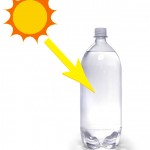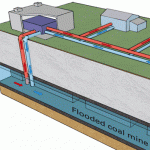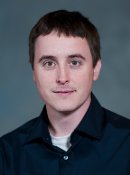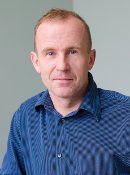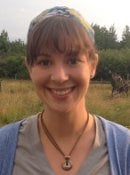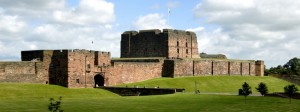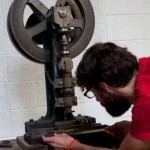 Daniel Schneider (M.S. graduate student in IA) was recently featured on the Hamilton Wood Type and Printing Museum news blog for his work in recording one of their vintage pieces of machinery. Schneider is doing his Master’s thesis on wood type manufacturing and skill as embodied by the workers at the Hamilton Manufacturing Company in Two Rivers, WI, which was the nation’s largest wooden type producer until it closed in the 1980s.
Daniel Schneider (M.S. graduate student in IA) was recently featured on the Hamilton Wood Type and Printing Museum news blog for his work in recording one of their vintage pieces of machinery. Schneider is doing his Master’s thesis on wood type manufacturing and skill as embodied by the workers at the Hamilton Manufacturing Company in Two Rivers, WI, which was the nation’s largest wooden type producer until it closed in the 1980s.
As part of that work Schneider is recording and rehabilitating an antique border-stamping machine (seen at left) in the museum. The machine was used to make the ornamental borders for newspaper advertisements and individual letterpress printers, and although the machine and some of its stamping dies remain in the museum along with samples of border it cut, there are no former operators who can explain the subtleties of the machine and its operations. Later this fall, Schneider will get the machine working again, experiment with it, and then in the winter and spring give weekend demonstrations at the museum. He expects to finish his thesis in summer 2015.
See the full Hamilton post at “Drawing a Machine“
 From
From 